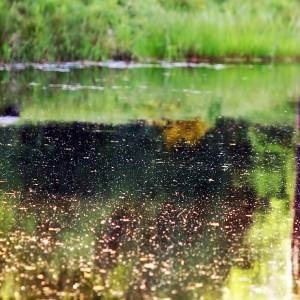Phytoplankton-zooplankton coupling in a cascade of hypertrophic fishponds

Submitted: 26 May 2023
Accepted: 21 August 2023
Published: 21 September 2023
Accepted: 21 August 2023
Abstract Views: 1789
PDF: 294
Supplementary: 29
HTML: 9
Supplementary: 29
HTML: 9
Publisher's note
All claims expressed in this article are solely those of the authors and do not necessarily represent those of their affiliated organizations, or those of the publisher, the editors and the reviewers. Any product that may be evaluated in this article or claim that may be made by its manufacturer is not guaranteed or endorsed by the publisher.
All claims expressed in this article are solely those of the authors and do not necessarily represent those of their affiliated organizations, or those of the publisher, the editors and the reviewers. Any product that may be evaluated in this article or claim that may be made by its manufacturer is not guaranteed or endorsed by the publisher.
Similar Articles
- Ning Chen, Ling Liu, Yanfeng Li, Danying Qiao, Yuanpo Li, Ying Zhang, Yiyan Lv, Morphology-based classification of functional groups for potamoplankton , Journal of Limnology: Vol. 74 No. 3 (2015)
- Camilla Capelli, Federica Mauri, Elisa Pianta, Federica Rotta, Fabio Lepori, Environmental DNA survey indicates arrival of quagga mussel in Ticino River basin , Journal of Limnology: Vol. 82 (2023)
- Angela Caro-Borrero, Javier Carmona Jiménez, Marisa Mazari Hiriart, Evaluation of ecological quality in peri-urban rivers in Mexico City: a proposal for identifying and validating reference sites using benthic macroinvertebrates as indicators , Journal of Limnology: Vol. 75 No. s1 (2016): Proceedings of the 6th National Congress of Limnology
- Vittoria Ferrari, Arianna Gualdi, Isabella Bertani, Diego Fontaneto, Lyudmila Kamburska, Karimullah Karimullah, Federico Marrone, Ulrike Obertegger, Giampaolo Rossetti, Rocco Tiberti, Tommaso Cancellario, A georeferenced dataset of Italian occurrence records of the phylum Rotifera , Journal of Limnology: Vol. 82 No. s1 (2023): Georeferenced freshwater biodiversity data
- Stephan Hilgert, Friedrich Gauger, Sebastian Hölzlwimmerl, Stephan Fuchs, Development of a flexible dialysis pore water sampler placement system: easy handling and related error sources , Journal of Limnology: Vol. 74 No. 2 (2015)
- Jong-Yun Choi, Kwang-Seuk Jeong, Geung-Hwan La, Kwang-Hyeon Chang, Gea-Jae Joo, The influence of aquatic macrophytes on distribution and feeding habit of two Asplanchna species (A. priodonta and A. herrickii) in shallow wetlands, South Korea , Journal of Limnology: Vol. 74 No. 1 (2015)
- Wasinee Thongdang, Ratcha Chaichana, Influence of water quality and seasonal variations on freshwater macroinvertebrate diversity and community structure in wastewater treatment ponds, Phetchaburi Province, Thailand , Journal of Limnology: Vol. 83 (2024)
- Angela Boggero, Lyudmila Kamburska, Silvia Zaupa, Marzia Ciampittiello, Daniele Paganelli, Marco Cifoni, Michela Rogora, Tiziana Di Lorenzo, Sampling and laboratory protocols to study the effects of water-level management on the littoral invertebrate fauna in deep and large temperate lakes , Journal of Limnology: Vol. 81 No. s2 (2022): Effects of water level management on lake littorals and downstream river areas
- Sameer M. Padhye, Alexey A. Kotov, Neelesh Dahanukar, Henri Dumont, Biogeography of the ‘water flea’ Daphnia O. F. Müller (Crustacea: Branchiopoda: Anomopoda) on the Indian subcontinent , Journal of Limnology: Vol. 75 No. 3 (2016)
- Malgorzata Adamczuk, Niche separation by littoral-benthic Chydoridae (Cladocera, Crustacea) in a deep lake - potential drivers of their distribution and role in littoral-pelagic coupling , Journal of Limnology: Vol. 73 No. 3 (2014)
<< < 14 15 16 17 18 19 20 21 22 23 > >>
You may also start an advanced similarity search for this article.

 https://doi.org/10.4081/jlimnol.2023.2145
https://doi.org/10.4081/jlimnol.2023.2145





